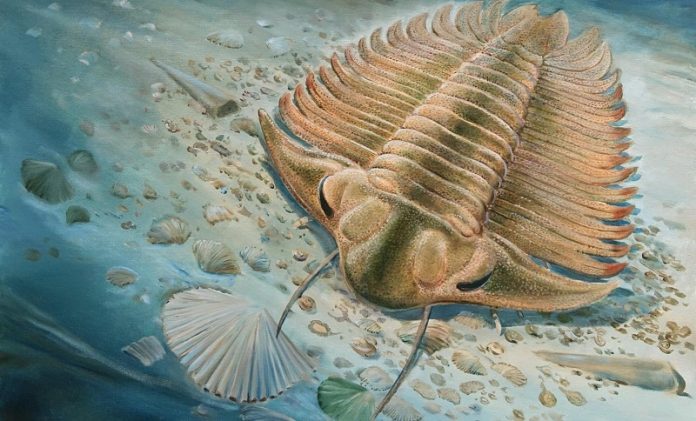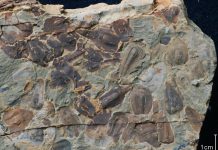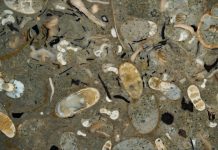
Scientists have made a fascinating discovery, unlocking secrets from a creature that lived 465 million years ago!
Using advanced imaging technology, researchers from Charles University in Prague have been able to peek into the last meal of a trilobite, an ancient sea creature.
This study, published in Nature, helps us understand more about the life and habits of trilobites and the ecosystems of the distant past.
This trilobite fossil was found over a hundred years ago by Karel Holub, a private collector, and it’s been in the museum of Rokycany ever since.
For Petr Kraft, one of the researchers, this fossil holds sentimental value as it was his grandfather’s favorite, having volunteered at the museum during his childhood.
However, it’s only now that we’re learning more about it thanks to new, powerful imaging techniques.
Previously, trying to examine the contents of the trilobite’s gut would have meant damaging this precious specimen.
But with the use of synchrotron tomography, scientists can now look inside without causing any harm.
This technique creates detailed images, like a hospital CT scan, allowing scientists to build a 3D model of the fossil. They conducted this examination in Grenoble, France, at the European Synchrotron.
What they discovered inside the trilobite was a tightly packed assortment of shells and fragments from other marine creatures such as ostracods, bivalves, and echinoderms.
This finding suggests that trilobites were not picky eaters, munching on both dead and living animals, swallowing them whole, shells and all, without attempting to reject the hard parts.
It seems like our ancient friend was a bit of an opportunistic scavenger, feeding on anything easy to disintegrate or small enough to be swallowed whole.
Surprisingly, the shells inside the trilobite’s digestive tract were not dissolved, indicating they weren’t exposed to acidic environments, like the stomachs of many modern animals.
It appears that trilobites, like some modern crustaceans and horseshoe crabs, had neutral or slightly alkaline gut environments, which might be an ancient feature of this group of animals.
The trilobite itself didn’t escape the circle of life. After its death, other tiny sea creatures tried to scavenge on it. Researchers found numerous tracks of these small scavengers that had burrowed into the trilobite’s carcass.
Curiously, they avoided the trilobite’s gut, possibly sensing harmful digestive enzymes or a noxious internal environment. However, they too met an unfortunate fate, getting trapped in the solidifying material around the dead trilobite, as evidenced by the absence of exit tracks.
This study gives us a unique and detailed look into the life of trilobites and the marine ecosystems millions of years ago.
The advanced imaging used in this research unlocks ancient secrets, helping scientists paint a clearer picture of the Earth’s past inhabitants and their lifestyles, contributing to our broader understanding of the evolution of life on our planet.
It’s like a time machine, taking us back to see a day in the life of an ancient creature, showing us it’s not that different from the cycles of life we observe today.
Follow us on Twitter for more articles about this topic.
Source: Charles University.



